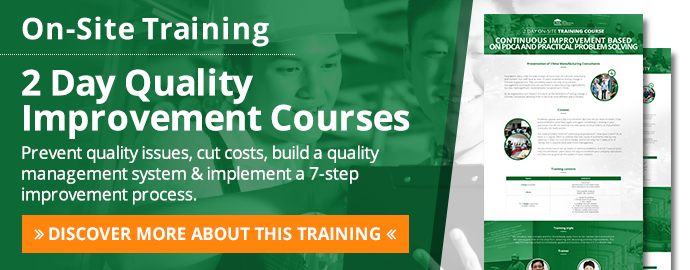I remember I was auditing a factory a few years ago, and the boss told me he agreed with the issues I detected. He knew quality problems were costing him serious money. But his managers weren’t aware of that, and they didn’t really pay attention to quality.
So how do we analyze the cost of poor quality?

The first step is to have all key people aware that poor quality COSTS A LOT OF MONEY. As a general manager once told me, a cost is best expressed as “this problem cost the company 1 apartment + 1 Audi A6”. That gets people’s attention!
1. Keeping track of costs
A ‘cost of poor quality’ model for a Chinese factory would typically include the following entries:
- Inspection & testing – if processes were error-free (both internally and at the supplier level), we wouldn’t need to pay for all those inspectors, right?
- Issues that are caught and fixed before shipment – those often result in rework, scrapped material, late shipment penalties, and some degree of customer dissatisfaction if the issue is not fully resolved.
- Issues that are found by the customer or one of their customers. This category is usually very costly, especially in industries like oil & gas, medical devices, or automotive.
2. The mega-cost that is difficult to quantify
Let’s imagine 2 Chinese factories, A and B, starting business on the same day.
A has very good quality. Customers are easy to get (they are impressed by the systems when they visit/audit A), tend to do business for longer, and tend to give more business.
B has a very average quality (which, in China, is code for ‘poor quality’). It has a harder time getting customers, those customers give smaller orders (they are afraid by the constant risk of major issues), and the key account turnover is higher.
After a few years, A has grown substantially while B has been struggling just replacing lost business. After 10 years, the difference has compounded to the point where A is many time larger and more profitable than B.
This usually doesn’t come out of the typical cost of poor quality calculations. Yet it can’t be ignored.
3. Reducing total costs of quality
So, poor quality is quite expensive. But, a production manager in a Chinese factory might ask: ‘Does that mean we should do more testing & inspection? That’s also expensive.’
Actually, some of the inspection can probably be eliminated (by setting up mistake-proofing systems), or given to production operators as part of their job. The goal is NOT to hire more inspectors.
Two things are needed.
- Quality assurance systems. Seeing the whole productive flow as a system and placing the right control points in place. Working on corrective actions to fix root causes of problems and ensure they don’t come back every day/week. Giving feedback to the process step that creates issues, so that something can be done.
- Prevention activities such as:
- Statistical process control (hint: it has nothing to do with end-of-line inspections based on the AQL tables)
- Mistake-proofing
- Preventative maintenance
- Training of operators and supervisors
- Writing work instructions
- Pushing suppliers to fix their own processes
Let's summarise
In summary, the term "cost of poor quality" ignores the impact on the company's long-term health, but is useful in driving home the concept that mistakes are quite costly.
How about in your Chinese factory? Are middle managers and top managers aware of the business impact of quality problems? What have you done to change their way of thinking and acting? Please let us know your thoughts and experience on the above by leaving a comment below!





